It’s no secret that all aquarium life depends on good water quality to survive.
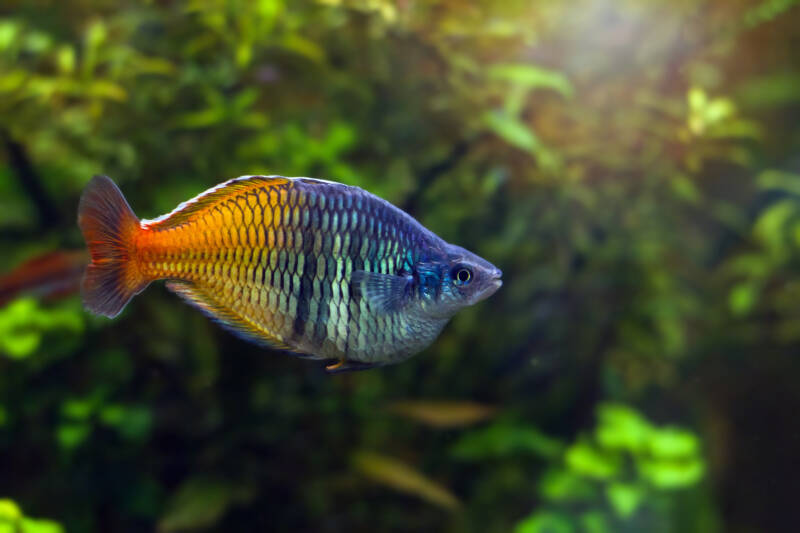
Most new aquarists simply fill their tank with tap water and assume it’s OK for the fish, plants, and invertebrates.
But not all water supplies are equal. In some cases, the water you add to your aquarium may be making it harder for you to keep your tank healthy and looking great.
Let’s take a look at several kinds of water sources and their characteristics, and see how they affect the many types of aquariums.
[toc]
Municipal Water
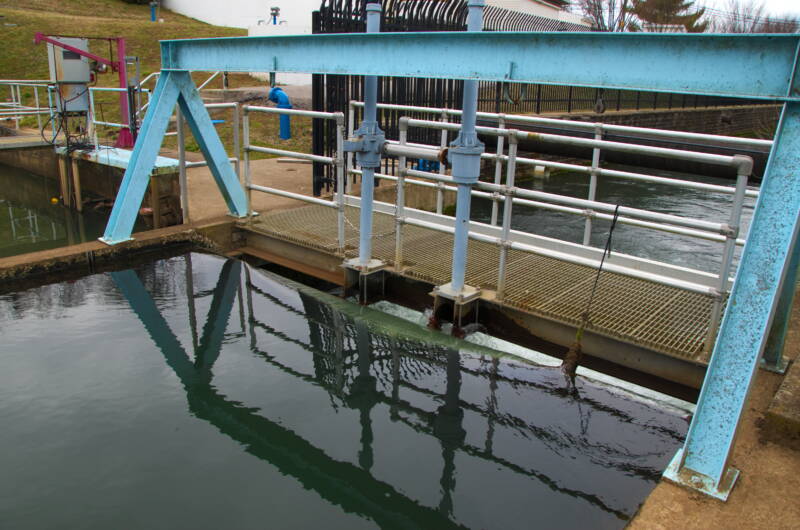
If your water supply is provided by the city or county government, it’s considered municipal or “city” water.
The raw water can come from a reservoir, well, or river. When it reaches the treatment facility, it’s filtered and disinfected.
Municipal water is regulated by the government. In the United States, municipal water must meet certain guidelines enforced by the US Environmental Protection Agency.
The local treatment facility tests and adjusts the water quality parameters to meet these guidelines. This ensures that the water is safe to use for cooking, drinking, and washing.
But this does not mean the water is safe for aquarium use. Most municipal water sources are treated with chlorine or chloramine.

These disinfectants kill bacteria, parasites, and other microbes that shouldn’t be in drinking water. Unfortunately, these chemicals are also toxic to fish and invertebrates.
Municipal Water and Aquariums
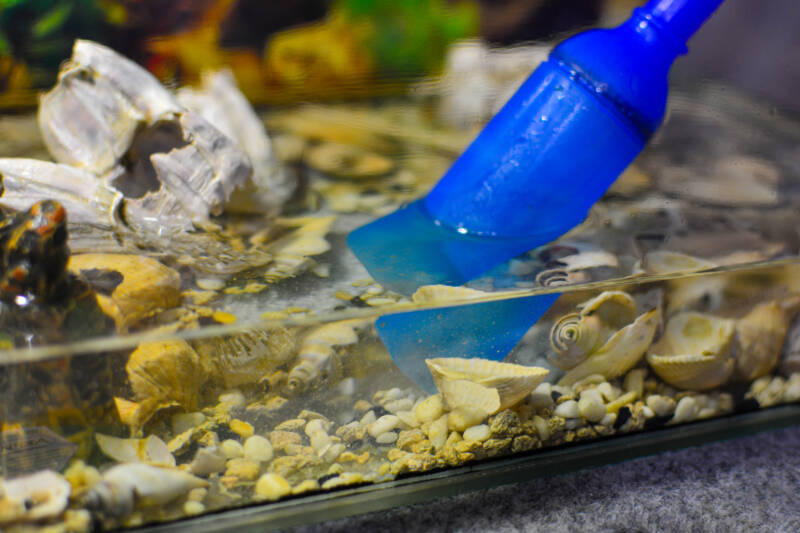
If you’re keeping hardy community fish, conditioned city water is probably OK for your tank as long as you use a water conditioner.
A water conditioner neutralizes chlorine disinfectants and protects your fish. In fact, your local fish shop is probably using the same water as you are.
This makes it easy to bring home fish and add them to your tank. Many water quality parameters, like water hardness and pH, will be similar to the water in your aquarium.
However, municipal water may not be the best water for every kind of aquarium.
Reef Aquariums and Municipal Water
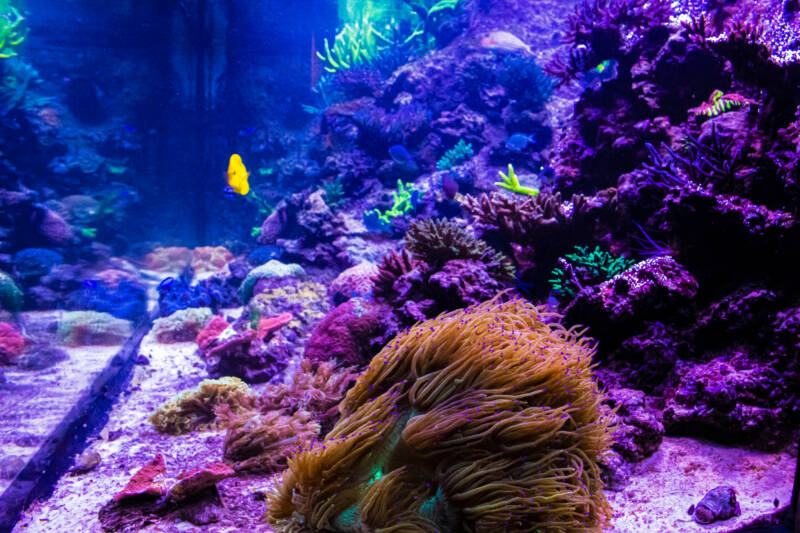
Reef aquariums are especially sensitive to excess nutrients like phosphate and nitrate. Municipal water can contain a high level of phosphate because it is added to reduce pipe corrosion.
Even though nitrate is regulated, the level in municipal water is too high for corals and marine fish.
While the levels are acceptable for drinking water, this water can trigger algae blooms under the well-lit conditions used with reef aquariums.
Reef aquarists strive to keep nitrate levels as low as possible. Adding municipal water for top-offs and water changes may actually boost nitrates.
LPS and SPS corals are especially sensitive to heavy metals like copper.
The copper level in your municipal water supply may be low, but copper can leach into your home’s water through copper plumbing. This causes your tap water to contain unsafe levels of copper that stress delicate corals and other invertebrates.
Planted Aquariums and Municipal Water
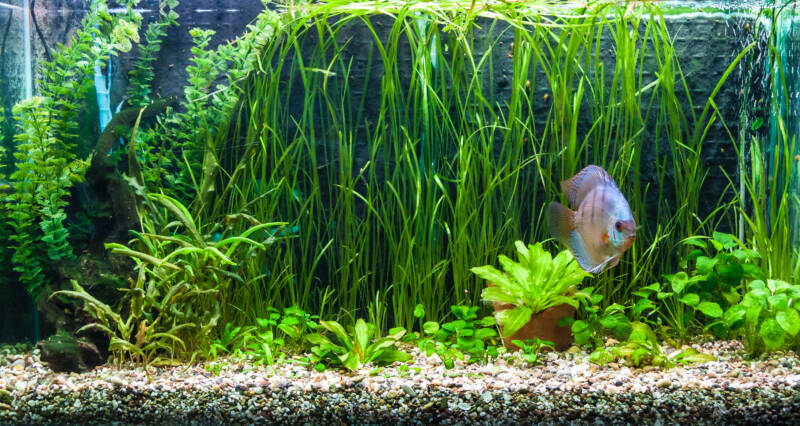
Many planted aquariums require water that is low in hardness and alkalinity. Municipal water is usually higher in minerals than what most plant enthusiasts prefer. It also makes it difficult to bring the pH range down to 7 or below.
Aquarists keeping Amazonian fish like tetras, apistogrammas, angelfish, discus, freshwater stingrays, corydoras, Bolivian rams, silver dollars, and plants like Vallisneria, Amazon sword often struggle with hard, alkaline city water.
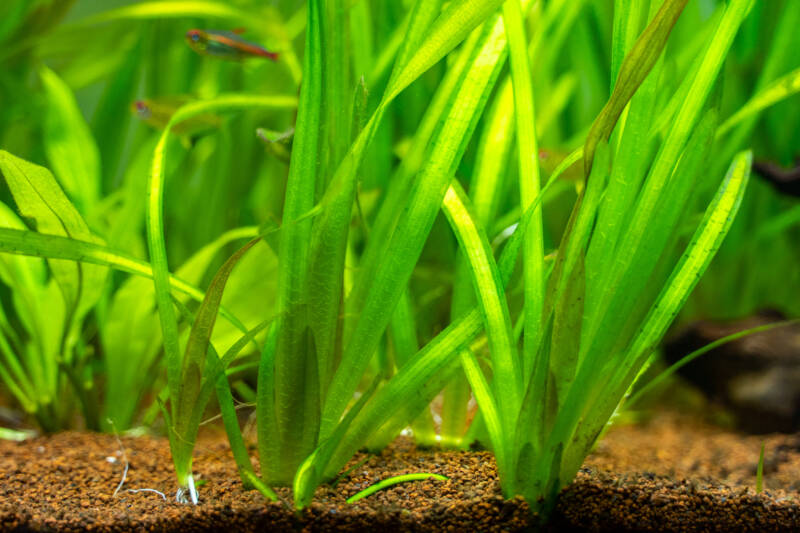
Well Water

Unlike municipal water, private wells are not regulated by the government. The well owner is responsible for testing and correcting any problems with the water supply.
Because well water is not treated at a facility, its properties can vary depending on the underground minerals, depth of the well, and seasonal rain and snowmelt.
Well water can be very soft and acidic or very hard with a high pH.
If the well is near a farm or livestock facility, the water may contain ammonia, nitrite, nitrate, and phosphate. Some well water is very acidic and causes metals to leach from the plumbing.
Well Water and Aquariums
Many wells are safe and may be perfect for your aquarium. If you’re keeping African cichlids and your water is hard, you have the advantage.
But if it is soft and slightly acidic, you’ll need to add hardness and alkalinity boosters to bring the water chemistry in line with the needs of your fish.
An alternative is to keep fish and plants that thrive in medium to soft water.
The best thing to do is test the water to find out the hardness and pH levels. If the water is soft or acidic, test for copper too.
Bottled Water
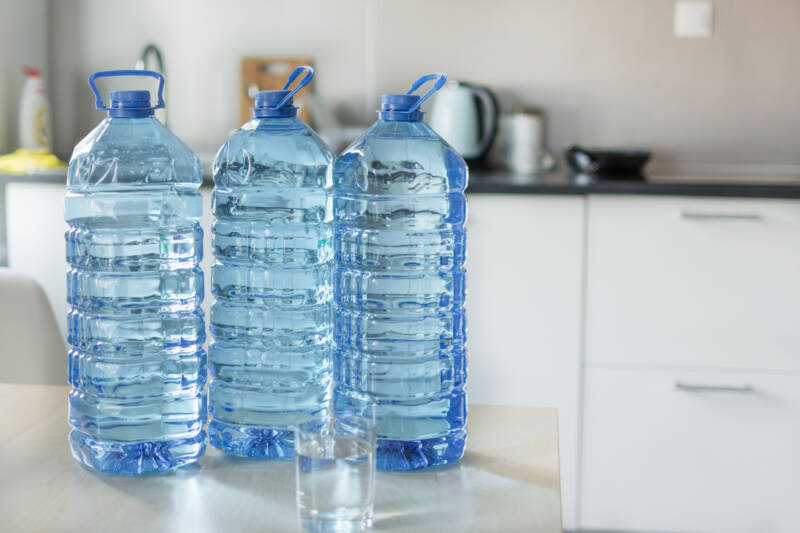
Bottled water, spring water, and filtered water are all generic terms without any meaning to the aquarist.
Just because the water comes from a spring does not mean it is soft. It can be very hard with a high pH. Filtered water may simply mean it was passed through a sediment filter to remove fine particles.
Most bottled waters come from springs or even municipal treatment plants. Instead of treating the water with chlorine, ozone is used because it won’t add that “swimming pool” odor to the water.
Like city water, it is disinfected, but it may be too hard or soft for your type of aquarium.
Rainwater
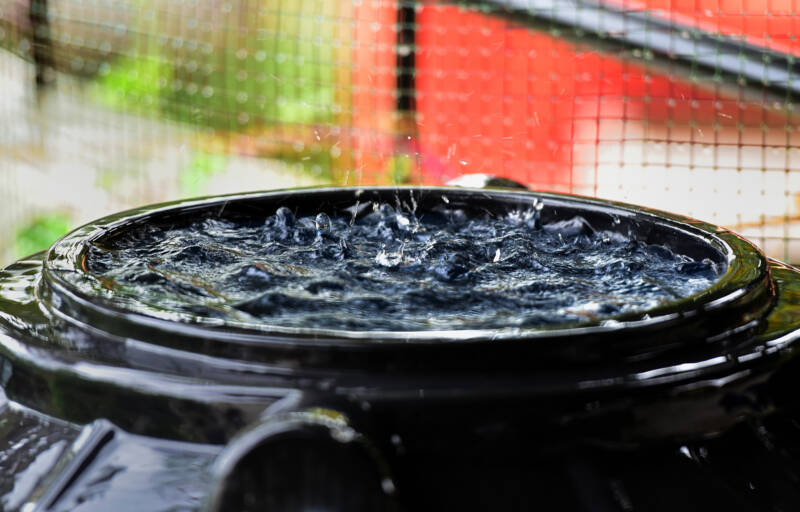
Old-time tropical fish breeders would often gather rainwater. They swore it triggered spawning with certain species of fish.
The truth is, rainwater is softer than many tap water sources. It also has lower alkalinity, making it easier to lower the pH.
Some tropical fish spawn when their water quality changes a little bit. This is probably why fish breeders collected rainwater in barrels.
Today rainwater may contain metals and other pollutants. It is not a reliable source for aquarium water anymore.
Natural Water
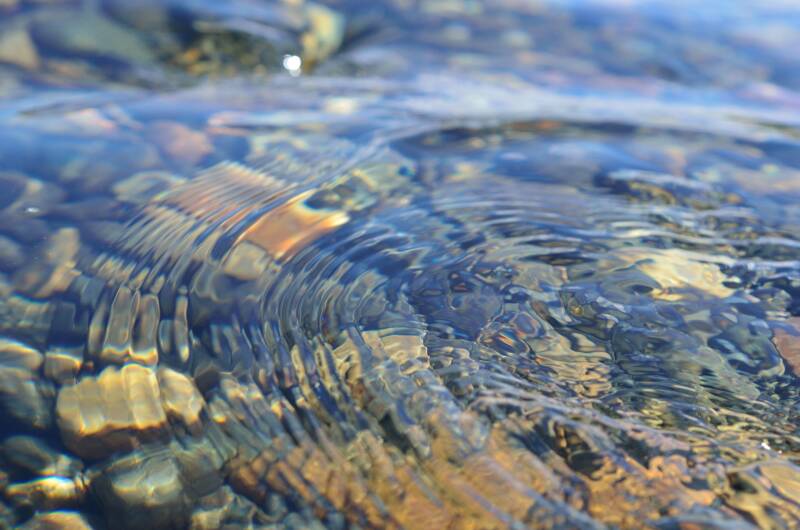
If you’re keeping native fish, it makes sense to walk down to the lake to get a bucket of water. But when keeping tropical fish, it is better to use tap water.
Natural water will introduce unwanted algae, especially when gathered from the shore.
You also don’t know how clean the water is. It may contain residual oil and fuel from powerboats or run-off from a nearby parking lot.
Filtration Systems for Tap Water
There are several reasons to use a tap water filter to prepare the water for your aquarium. There are many types of water filters to choose from, but it’s important to understand what they remove and how it affects water quality.
Here are the most common tap water filters and an explanation of how they work.
Faucet Filters
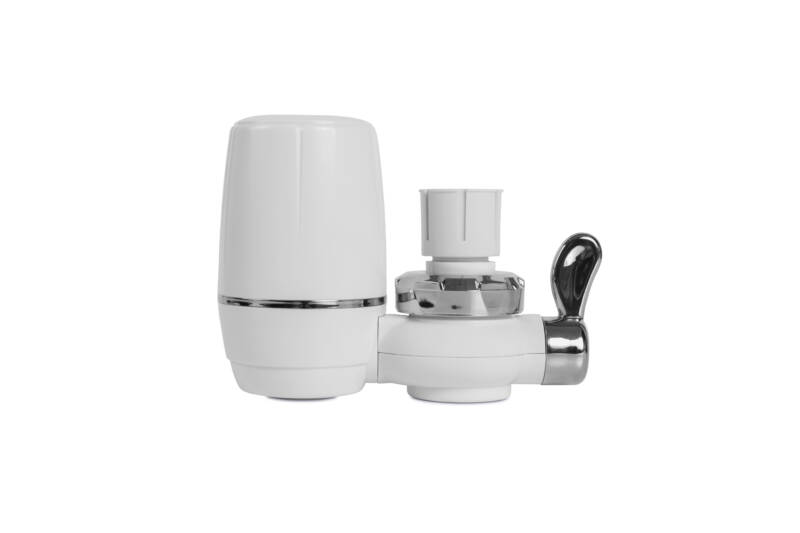
A faucet filter attaches to the kitchen sink. It has a small, replicable filter cartridge. Inside the cartridge are several types of filter media.
Faucet filters remove sediments, like rust particles, chlorine, chloramine, and taste and odor-causing organics. Some filters also remove traces of heavy metals like copper and lead.
This type of filter doesn’t reduce hardness, alkalinity, nitrates, phosphates, and other inorganic contaminants. Faucet filters do not remove minerals or salts from tap water.
Pitcher Filters
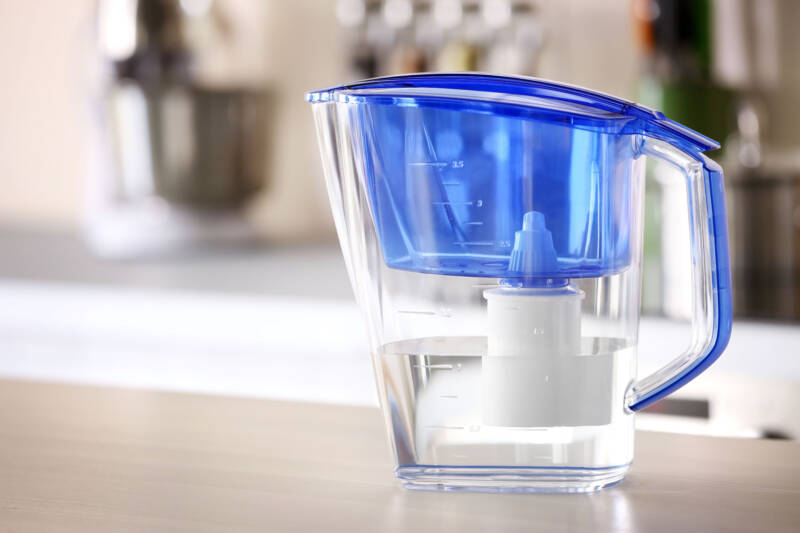
Pitcher filters use the same type of filter media as faucet filters, except it is inside the water pitcher. When water is added to the pitcher, it flows through the cartridge and fills the pitcher with water.
Reverse Osmosis Filters
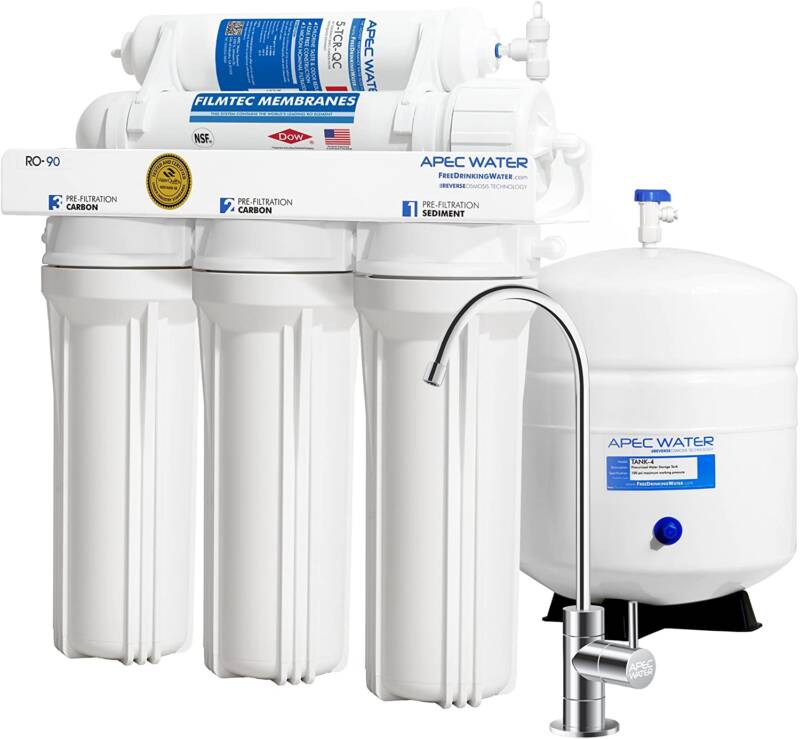
Reverse osmosis filtration, also known as RO, is the most advanced type of tap water filtration.
Here’s how it works. Tap water first passes through a series of filter cartridges. The sediment filter removes sand particles, mineral scale, and rust. The activated carbon cartridge removes chlorine and chloramine disinfectants and organic chemicals like pesticides.
Next, the reverse osmosis process forces the water through a semi-permeable membrane. The membrane separates pollutants like heavy metals, nitrates, and phosphates from the water.
RO also removes minerals like calcium, magnesium, and bicarbonate. A small amount of water is used to flush the concentrated pollutants down the drain, while the purified water is collected for use in the aquarium.
Some RO systems also use deionization cartridges to strip out any trace of pollutants that pass through the system.
Distilled Water
Distillation removes everything RO filters remove while sterilizing the water without the use of chlorine chemicals.
The distillation process uses a lot of energy to heat the water and does not produce more than a gallon or two at a time.
Which Type of Filter is Best for Aquarium Water?
The answer depends on what type of water you need for your tank.
If your tap water is acceptable for your aquarium but is chlorinated, a faucet filter is all you need. It will remove the chlorine and leave behind the minerals.
Reef aquarists like to use RO because it removes “everything” from the water. This ensures no algae-promoting nutrients, heavy metals, or nitrates are added with top-off water.
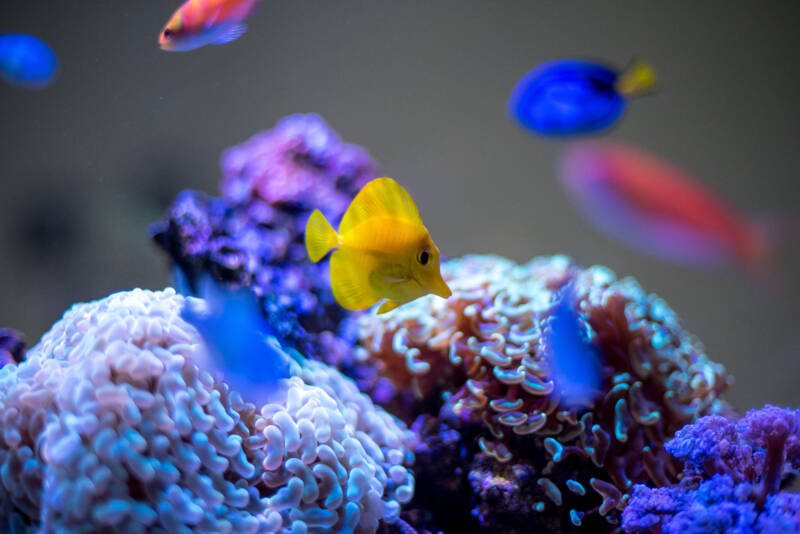
RO water is also ideal for mixing up batches of saltwater. Synthetic saltwater is formulated to duplicate real seawater. RO water adds no extra minerals or salts, so the saltwater is exactly like the manufacturer intended.
Larger planted aquariums also benefit from RO water. You can blend RO with regular tap water to get just the right level of hardness and alkalinity.

RO makes it easier to bring the pH below 7.0 because the alkalinity level is similar to Amazonian waters.
RO also ensures you’re not adding algae-promoting nutrients and hardness back to the tank through top-offs.
A home distiller is relatively expensive to purchase and operate. It only makes a gallon or two at a time. You don’t need sterilized water for an aquarium.
RO water is much more efficient and will produce more water per day than a distiller. Even the most sensitive aquariums will thrive with RO water.
Closing Thoughts
Your well or city water may be perfect for your aquarium. However, for many aquarists, a water filter can make caring for their aquarium easier.
A simple faucet filter for chlorine removal may be all you need. But for reef aquarists, advanced water gardeners, and fish breeders, RO is the way to go.
RO will eliminate all the minerals and strip out unwanted nutrients and metals. It’s the only way to have complete control of your aquarium’s water chemistry.
If you have questions or comments, please leave them below.
